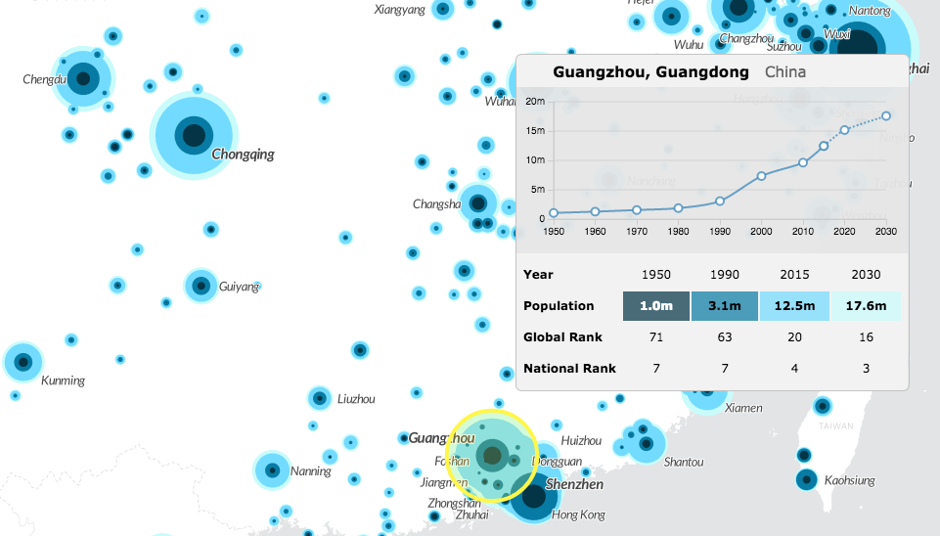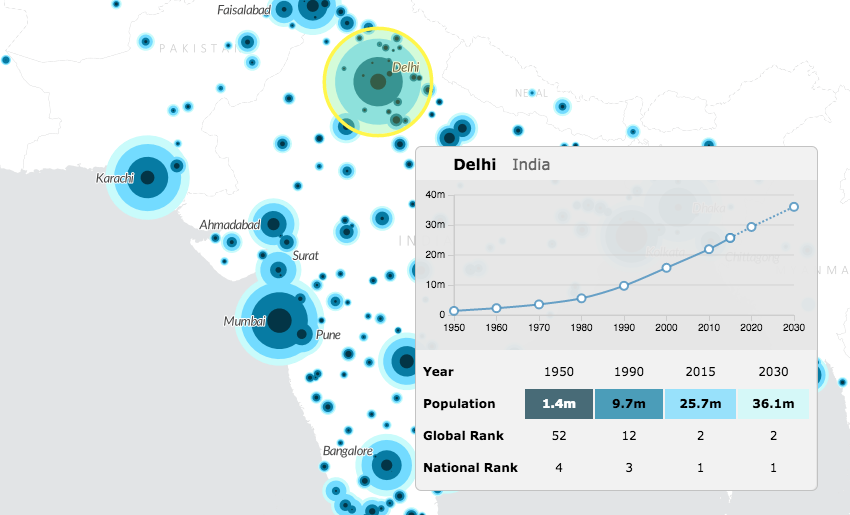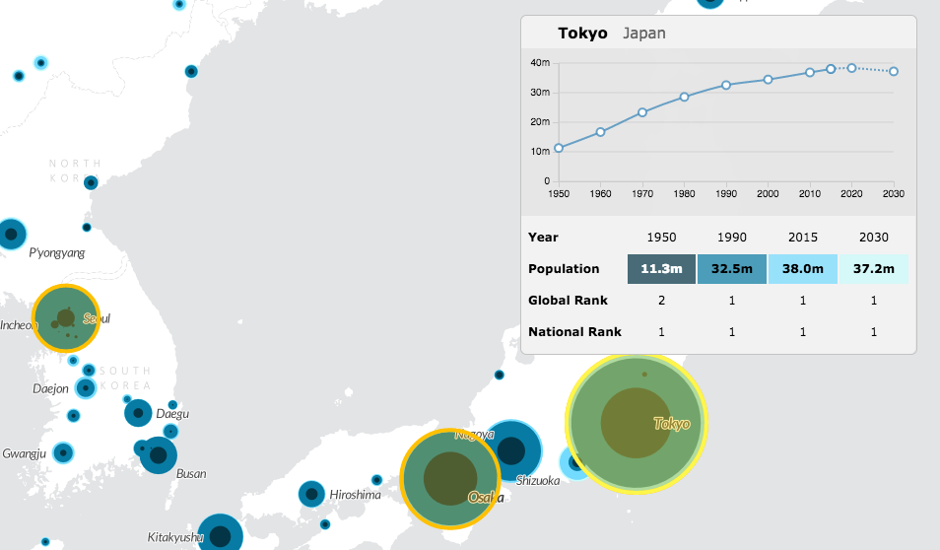This delightfully user-friendly data viz tracks city population trajectories.

In 1950, only 30 percent of the world’s population lived in cities, compared with 54 percent in 2015. A new map by urban geographer Duncan Smith tracks the bursts in city populations that contributed to this growth.
Here’s Smith on the implication of global urbanization patterns, in a guide to his interactive data viz:
Our increasingly urban world now frames many of society’s greatest challenges. From global equality to health, education, prosperity and, not least, sustainability, solutions need to be interwoven with fostering livable, efficient and inclusive cities.
In its 2014 World Urbanization Prospects report, the UN tracked the populations of major cities from 1950 to 2014, then predicted how these populations would grow (or shrink) up to the year 2030. Using these data, Smith represented each city on his map with a dark blue core, the size of which is proportional to the city’s 1950 population. The concentric circles around that core, in lighter blue, vary according to the city’s population in 1990, 2015, and 2030.
The result is a delightfully user-friendly map of urban trajectories. Take the London chart below. The city housed around 8.4 million residents in 1950, but in the second half of the 20th century its population fell, in line with many other major metros of Western Europe and the Northeast U.S. It’s now creeping back up but remains far outpaced by growth in other cities. In 2030, it’s expected to be the world’s 36th biggest city, whereas in 1950 it ranked third.
Much urban growth in the 21st century has been driven by Asia, which now houses 53 percent of the world’s urban population. In China, one area of startling growth is the Pearl River Delta, which comprises several large, and rapidly expanding cities such as Hong Kong, Guangzhou, Shenzhen, Foshan, and Dongguan. Clumped together, these cities make Pearl River Delta the world’s largest urban area in size and population:

In the years to come, India will contribute more urban growth than any other single country, the UN predicts. For the last 65 years, its capital of New Delhi has seen massive jumps in population. In the next 15 years, it’s going to gain another 10 million residents, likely reaching a high total of around 36 million. At this rate, it’s on track to one day overtake Tokyo (which is likely shrink to 37 million by then) as the world’s largest individual city:


No comments:
Post a Comment